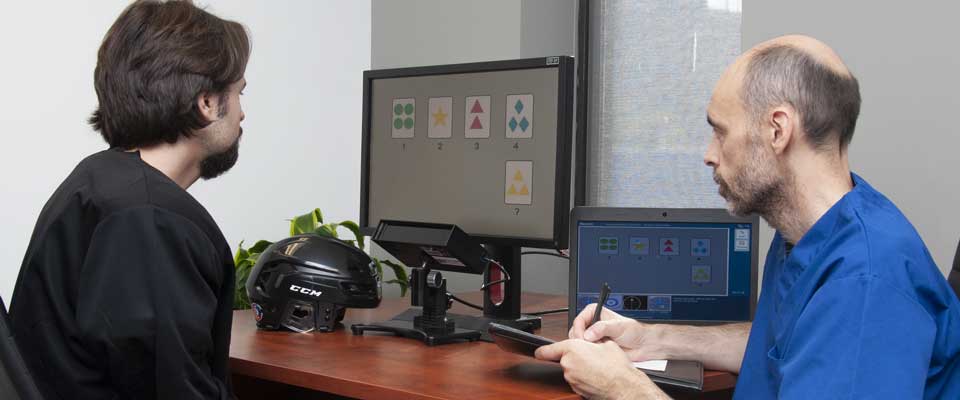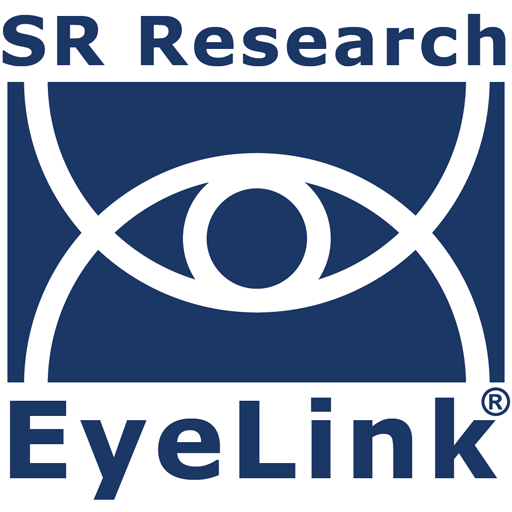Clinical and Oculomotor Eye-Tracking Research Solutions
The outstanding spatial accuracy, low noise, and high sampling rates of EyeLink systems allow the detection of even the most subtle differences in core oculomotor metrics such as fixation duration and saccade latency / velocity. Researchers can measure deficits precisely, and track changes in performance over time or with treatment. EyeLink systems are perfect for research into oculomotor deficits associated with head trauma, autism, schizophrenia, Parkinson’s Disease, nystagmus, and many other neurological / neuropsychiatric disorders.

If you would like to find out how our eye-tracking hardware and software can help your clinical or oculomotor research, get in touch, and we will get back to you!
Eye-Tracking Hardware Solutions for Clinical Research and Oculomotor Research
The EyeLink 1000 Plus, EyeLink Portable Duo, and EyeLink 3 have outstanding technical specifications, making both systems ideal for clinical and oculomotor research. The EyeLink 1000 Plus has a range of mounting options and integrations, including an Arm Mount that can be attached to a trolley for bedside testing. The Tower Mount has a 60×40 deg trackable range, allowing a wide range of saccade / pursuit amplitudes to be measured. The EyeLink Portable Duo is easy to transport and very quick to set up, making it perfect for testing patients across sites – in clinics or in homes. It also has IEC 60601 certification. The EyeLink 3 is perfect for examining eye and head integration, and the high-speed (up to 500 fps) recordings of the eyes allow researchers to explore new aspects of saccade and pupil dynamics.


The EyeLink 1000 Plus and EyeLink Portable Duo systems have the following features:
- Binocular Recording: Binocular recording and exceptionally low noise levels allow microsaccades and vergence eye movements to be studied in exceptional detail.
- High Sampling Speeds: Sampling speeds of up to 2000 Hz (binocular) combined with high levels of spatial accuracy allow oculomotor function to be studied in exceptional detail.
- Two Tracking Modes: Distinct head-fixed and head-free-modes ensure that oculomotor behavior can be measured in a wide range of patients, from infants with nystagmus to the elderly with dementia.
Software Solutions for Clinical Research and Oculomotor Research
Stimulus Presentation
SR Research Experiment Builder is a sophisticated and intuitive drag-and-drop graphical programming environment for creating computer-based psychology and neuroscience experiments. With precise stimulus timing and powerful gaze-contingent features, it is the perfect tool for creating a wide range of clinical tasks.

These are just some Experiment Builder features:
- Templates: Download templates for a wide range of standard clinical oculomotor tasks, including pro / antisaccade, smooth pursuit, fixation stability, and many more. We also have templates for many common neuropsychological tasks such as the WCST and SART.
- Gaze-Contingent Tasks: Easily create gaze-contingent tasks for clinical / oculomotor research, including saccadic adaptation, target blanking, and moving scotoma.
- Complex Stimuli Presentation: Present complex visual stimuli such as images and videos with precise stimulus onset timing. Use custom movement patterns to generate constant velocity, sinusoidal, circular, and Lissajous pursuit targets.
EyeLink eye trackers also interface with a wide range of popular stimulus presentation software packages and programming languages including Psychtoolbox, PsychoPy, E-prime, and more.

Data Analysis
SR Research Data Viewer has an intuitive interface and is packed with powerful features that allow users to visualize their data and quickly output key gaze metrics.

- Data Visualizations: Plot gaze over time in Data Viewer’s Temporal Graph View. Target positions are also plotted to facilitate visualization and analysis.
- Detailed Saccade Reports: Output key oculomotor metrics, including saccade latency, amplitude, duration, average, and peak velocity.
- Sample Reports: Sample reports contain eye and target position and velocity, allowing simple calculation of pursuit metrics including velocity gain, RMSE, Log S/N, and phase-lag.
You can also import EyeLink Data Files directly into MATLAB, or convert them to ASCII for import into other software packages for analysis.
EyeLink Clinical and Oculomotor Research Publications
There are over 13,000 EyeLink publications in peer-reviewed journals and over 3100 EyeLink clinical and oculomotor research publications. Click the buttons below for searchable lists of EyeLink research papers:
